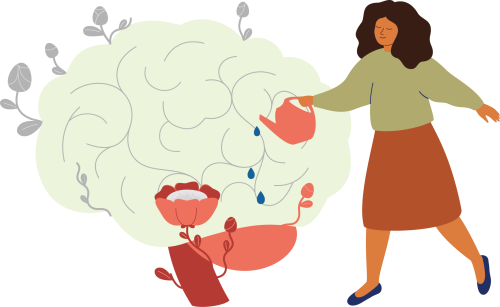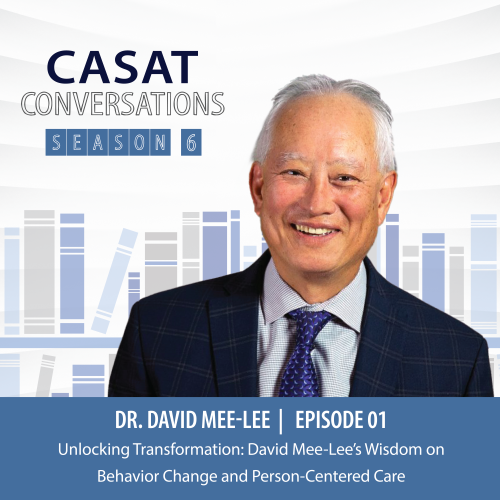The Heart of Healing: Strengthening the Therapeutic Alliance Through Micro-Moments
In the ever-growing landscape of therapeutic approaches, modalities, and evidence-based practices, one factor continues to stand out as a powerful predictor of positive outcomes: the therapeutic alliance. This relationship—rooted in trust, collaboration, and mutual respect—is not just a warm-up act for the “real” work of therapy. It is the work. This alliance, characterized by mutual trust, agreement on therapeutic goals, and collaboration on tasks, is consistently linked to positive clinical outcomes across various therapeutic modalities. And it’s built not just through grand gestures or theoretical alignment, but through consistent, small moments that quietly reinforce connection.

As mental health providers, we understand the importance of creating a safe and supportive space. Yet in the fast-paced rhythm of clinical work, it’s easy to overlook the subtle, yet powerful, ways we influence the therapeutic relationship—often without even realizing it. The good news? Every session offers countless opportunities to nurture the alliance through simple, meaningful interactions. In this blog, we’ll explore key elements of a strong therapeutic alliance, including how to build trust, the impact of micro-moments, fostering a collaborative partnership, the role of presence, and considerations for strengthening connection in virtual therapy.
Trust is Built, Not Assumed
Real trust doesn’t come from technique alone—it grows from transparency, consistency, and humanity. Clients feel safe when we:

Name what’s happening in the room, even if it’s uncomfortable (“I noticed a shift in your energy—can we explore that?”)

Follow through on what we say—whether that’s a promised referral, a check-in, or a commitment to revisit a topic

Show up as human, not as a polished expert. Owning our limitations, asking questions, and apologizing when we miss the mark can deepen the relationship far more than pretending to have all the answers
Transparency and follow-through are powerful ways to deepen trust within the therapeutic alliance. When therapists openly discuss the process, set clear expectations, and consistently honor their commitments, clients feel seen, heard, and supported. This kind of reliability not only strengthens the relationship but also models healthy, trustworthy dynamics that clients can carry into other areas of their lives.
The Power of Micro-Moments
Building and maintaining a strong therapeutic alliance often hinges on subtle yet impactful micro-moments—small interactions that foster connection and trust. Remembering personal details, offering genuine warmth, and using the client’s own language are just a few ways to deepen the relationship. These seemingly minor gestures communicate safety, empathy, and attunement, signaling to clients that they are valued and understood. Over time, these micro-moments become the building blocks of trust, reinforcing clients’ engagement in the therapeutic process. Here are a few examples:

Remembering a detail the client shared weeks ago (“You mentioned your mom’s birthday was coming up—how did it go?”)

Pausing instead of rushing to interpret or intervene

Offering genuine warmth in your greeting, especially after a tough session or rupture

Using the client’s language, not clinical jargon, when reflecting back

Noticing nonverbal cues and gently naming them (“I noticed you looked away when you said that—what came up for you?”)
These moments may seem small, but they carry immense weight. They tell the client: You matter. I’m with you. In many ways, this mirrors how trust is built in all human relationships—not through grand gestures, but through consistent, caring presence. In the therapy room, these micro-moments become a powerful reminder that healing often begins not with what we say, but with how we show up.
Beyond Rapport: A Collaborative Partnership
Therapeutic alliance isn’t about being liked. It’s about building a relationship where the client feels seen, heard, and empowered to participate in their own healing. When the alliance is strong, clients are more likely to engage deeply, return to session, and stick with the hard work of growth and change. When it falters, even the most skilled interventions can fall flat.
This includes:

Agreement on goals of therapy

Collaboration on tasks (what happens in session)

A bond of mutual trust and respect

Shared understanding of roles and responsibilities

Openness to feedback and the flexibility to adjust course
At its core, a strong therapeutic alliance creates a foundation where real transformation is possible. It turns therapy from a one-sided process into a collaborative journey—one where the client isn’t just receiving care, but actively co-creating their path forward.
Presence Over Perfection

You don’t have to get it all right to build a strong alliance. In fact, being fully present is often more powerful than being perfectly clinical. Clients tend to remember how they felt in session more than the specific technique you used. When we show up as humans—curious, attuned, and willing to repair when needed—we create a therapeutic space where healing can unfold. Strengthening your capacity for presence is an ongoing practice. A few ways to support this include:
- Practicing mindfulness or grounding between sessions to reset and return to center
- Building in margin between appointments to avoid emotional fatigue and rushing
- Knowing and honoring your limits so you can show up fully, not depleted
- Engaging in regular supervision or consultation to process emotional residue
- Staying connected to your “why”—remembering what drew you to this work in the first place
Remember, presence isn’t something you have to be perfect at—it’s something you return to, moment by moment. And it’s often the most healing gift we can offer. When we bring our full attention into the room, we invite our clients to do the same—and that’s where true connection, and transformation, begins.
Working Through a Screen: Challenges & Opportunities in Virtual Therapy
The advent of telehealth has introduced both challenges and opportunities in cultivating the therapeutic alliance. While some providers have expressed concern about the potential for diminished connection due to physical distance or technological barriers, emerging research suggests that therapeutic alliances formed via teletherapy can be just as strong as those developed in person.
Virtual therapy offers increased access and flexibility, especially for clients in remote or underserved areas. At the same time, it presents unique hurdles to building connection. Eye contact may feel misaligned, nonverbal cues are harder to read, and tech issues can disrupt the rhythm of conversation. Some clients may also struggle to find a private, quiet space, which can impact their ability to feel safe and fully present. Still, with intention and creativity, meaningful connection can absolutely be fostered through the screen.
Therapists can strengthen presence and engagement in virtual sessions by weaving in a few key practices:

Acknowledge the virtual context: “I know it can feel different to connect over video. Let’s check in—what helps you feel more grounded during these sessions?”

Establish grounding rituals: A shared breath, a stretch, or a brief pause at the beginning and end of each session can create a sense of structure and containment.

Invite personalization: Encourage clients to bring in an object of comfort or choose a part of their environment that feels safe and calming.

Narrate more intentionally: Slow down and name what you’re doing: “I’m just taking a moment to reflect before I respond—thank you for your patience.”

Use technology creatively: Incorporate features like screen sharing for exercises or digital whiteboards to enhance engagement and collaboration.
Even in a virtual setting, your presence can still be deeply felt when it’s paired with authenticity, attentiveness, and care. When we meet clients with intention—regardless of the medium—we affirm that the relationship is still the heart of the work. With consistency and creativity, the screen becomes less of a barrier and more of a bridge to meaningful connection and access to care.
A Living, Breathing Relationship
The therapeutic alliance is not a one-time achievement—it’s a living, evolving relationship that deepens over time. It’s built in the small moments, nurtured through trust, and strengthened by our willingness to show up fully, again and again. As therapists, it’s easy to get caught up in treatment plans, interventions, and documentation. But at the core of our work lies something far more foundational: our presence.
When we lead with authenticity, curiosity, and care, we remind our clients that they’re not alone—and that healing is possible in relationship. Because ultimately, it’s not just what we do that creates change. It’s how we are in the room that matters most. And when we commit to cultivating the therapeutic alliance with intention, we create a space where true transformation can unfold.
Continue the Conversation on Therapeutic Alliance

If you’re interested in exploring more about the power of the therapeutic alliance, we invite you to listen to the latest season of CASAT Conversations. In the first episode, Dr. David Mee-Lee—renowned psychiatrist, addiction specialist, and pioneer of person-centered care—shares reflections from his decades-long career. He offers invaluable insights on building compassionate, individualized systems of care and highlights why the therapeutic relationship is central to lasting change. Tune in to be inspired by his wisdom and practical guidance for mental health and addiction professionals alike.
References
Aafjes-van Doorn, K., Spina, D. S., Horne, S. J., & Békés, V. (2024). The association between quality of therapeutic alliance and treatment outcomes in teletherapy: A systematic review and meta-analysis. Clinical Psychology Review, 110, 102430. https://doi.org/10.1016/j.cpr.2024.102430
Ardito RB, Rabellino D. Therapeutic alliance and outcome of psychotherapy: historical excursus, measurements, and prospects for research. Front Psychol. 2011 Oct 18;2:270. doi: 10.3389/fpsyg.2011.00270. PMID: 22028698; PMCID: PMC3198542.
Lancaster, M. E., & Anbar, R. D. (2023, November). How the therapeutic alliance influences treatment outcome. Psychology Today. https://www.psychologytoday.com/us/blog/understanding-hypnosis/202311/how-the-therapeutic-alliance-influences-treatment-outcome
Blog Post Tags:
Related Blog Posts
Related Learning Labs
Related Resources
.
- Buscar Tratamiento de Calidad para Trastornos de uso de Sustancia (Finding Quality Treatment for Substance Use Disorders Spanish Version)
- Finding Quality Treatment for Substance Use Disorders
- Focus On Prevention: Strategies and Programs to Prevent Substance Use
- Monthly Variation in Substance Use Initiation Among Full-Time College Students
- The National Survey on Drug Use and Health (NSDUH) Report: Monthly Variation in Substance Use Initiation Among Adolescents








